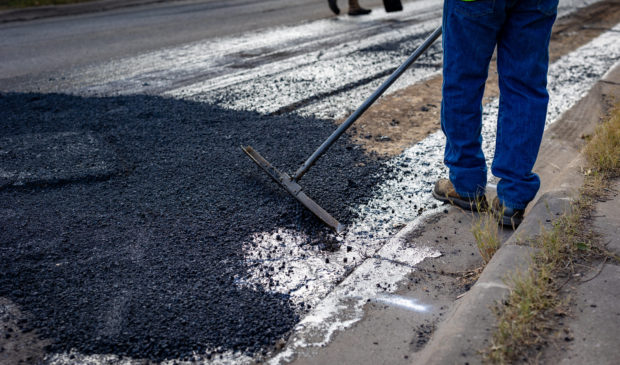Council approves land use code amendments, paving smoother path for mobility projects
Wednesday, May 25, 2022 by
Kali Bramble Staff charged with delivering on Austin’s mobility investments hope to soon see faster returns, as City Council passed an ordinance last Thursday that would simplify land use regulations for mobility projects.
The ordinance comprises a hodgepodge of land use code and criteria manual amendments designed specifically for streetscapes, which were previously lumped into the commercial development category. Staffers found that a reworking of water quality treatment requirements – impervious by nature and sometimes spanning multiple watersheds – was in order to cut back the time and money previously expended on variances.
“I’m proud to be a part of the community that passed the 2016, 2018 and 2020 mobility bonds as well as Project Connect, and to deliver on the promises made to (voters) in a timely manner we have to take a look at the code,” Mayor Steve Adler said. “This code was primarily designed for site-specific vertical developments, and that’s not the only thing that we’re concerned about in today’s world. This ordinance builds in a more thorough consideration of the horizontal and linear characteristics of mobility projects, often unique.”
Efforts to amend the land use code began in 2016, when Council directed the city manager to explore approaches to expedite the $720 million in mobility projects approved by voters earlier that year. Since the passage of billions more in mobility investments, the city’s Corridor Program Office has led an intensive analysis of existing code practice, enlisting the help of partners including the Transportation, Watershed Protection and Public Works departments, Housing and Planning, and the Capital Metropolitan Transportation Authority.
Six years later, these efforts have come to fruition in an extensive collection of amendments to Section 25 of the city land use code, many of which simply clarify distinctions between public right-of-way projects and commercial development projects previously negotiated through variances.
Perhaps the biggest changes are new water quality standards developed specifically for roadways, which have impervious cover restraints unique from traditional property development. Under the new amendments, maximum impervious cover levels for projects in the right of way in suburban watersheds, water supply suburban watersheds and water supply urban watersheds are set at 90, 65 and 55 percent, respectively (urban watersheds continue to allow 100 percent impervious cover in their right of way).
Also of note are new water quality credit and payment-in-lieu of built improvements programs that allow greater flexibility for construction while attempting to uphold watershed protection standards. As linear and often interconnected projects, the new credit program allows for impervious cover reductions elsewhere down a planned roadway project to count toward a project’s impervious cover calculation, as long as the improvement is within the same watershed.
Similarly, the payment-in-lieu program allows for projects in the right of way, often constrained by limited land, to provide payment to the city’s new suburban and water supply watersheds structural control fund when impervious cover improvements are not available. The funds would then be redistributed to further water quality improvement projects throughout the city.
The Corridor Program Office, along with partnering city departments, hopes the amendments will allow for the easier channeling of public dollars toward achieving mobility targets such as zero traffic fatalities by 2025 and shifting to only 50 percent single-occupancy vehicle traffic by 2039.
“Our city is growing quickly, and as we embark on a number of transformational projects, we have to think differently about how the city does things,” Adler continued. “We’re very committed to our 50/50 mode shift, as well as our environmental and climate goals. To meet them we have to have mobility projects that are successful, and we have to provide viable transportation networks that provide that choice.”
The Austin Monitor’s work is made possible by donations from the community. Though our reporting covers donors from time to time, we are careful to keep business and editorial efforts separate while maintaining transparency. A complete list of donors is available here, and our code of ethics is explained here.
You're a community leader
And we’re honored you look to us for serious, in-depth news. You know a strong community needs local and dedicated watchdog reporting. We’re here for you and that won’t change. Now will you take the powerful next step and support our nonprofit news organization?









